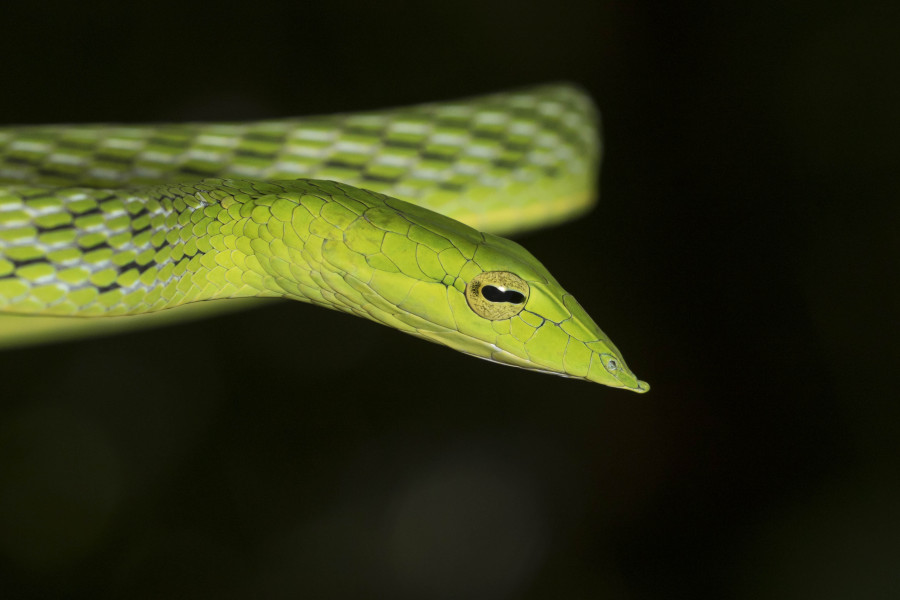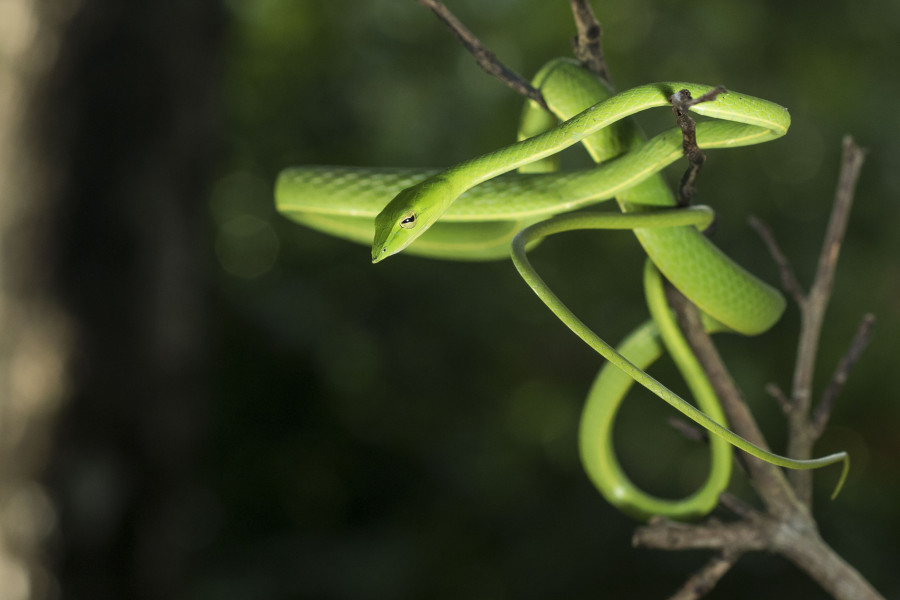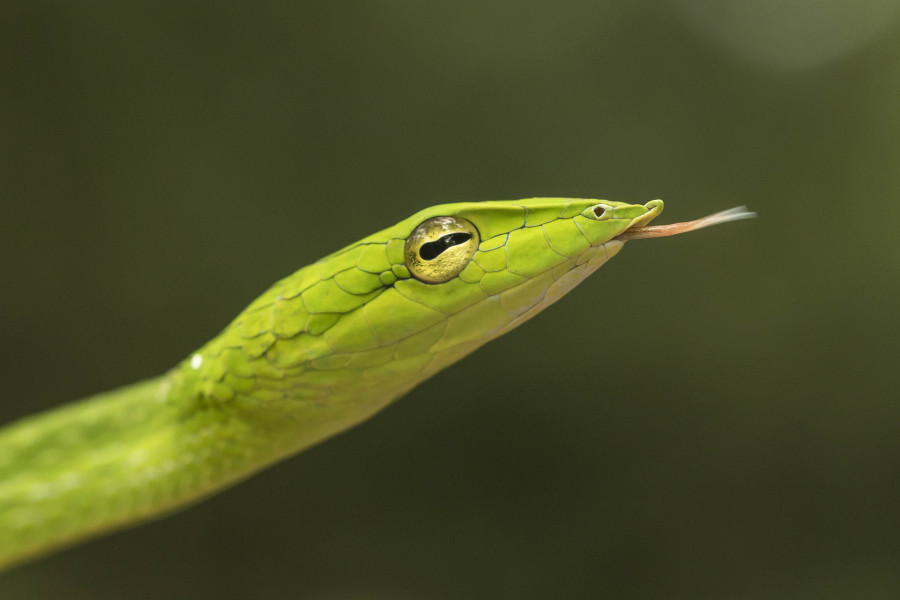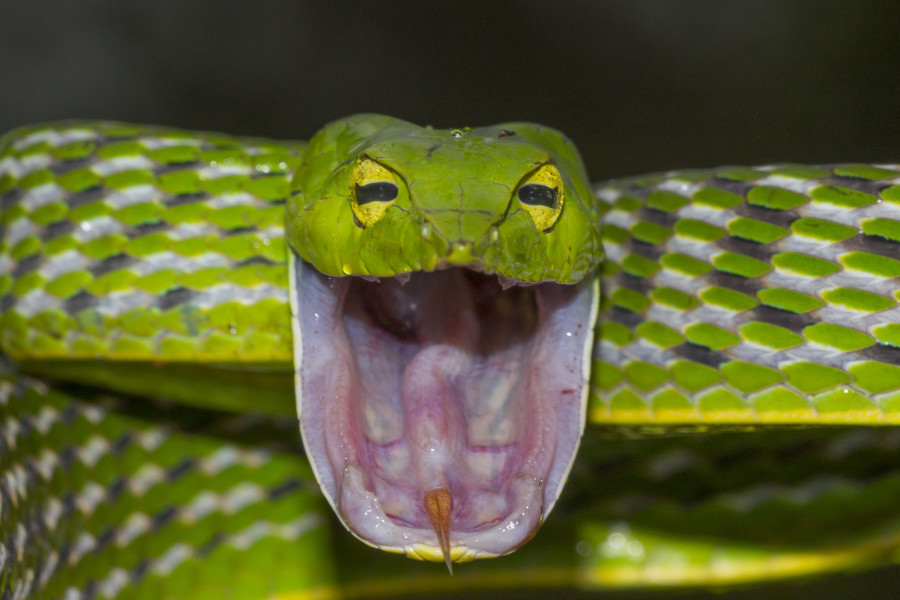Click on the pics below to load them in high resolution
With a body like a creeper, a tail as slim and delicate as a tendril, and a parrot green color finish, the Vine snake secures a place as one of the prettiest of Indian snakes. My first encounter with one was when I was about seven years old. It was the monsoon season and my brother and I were accompanying a young man named Stanley who was busy with casting a fishing net along the length of a muddy stream running in between the lush green fields of our village.
Every time the net was pulled up, Stanley would gather all the big fish and then allow us to scamper after the little ones that he didn’t want. So thrilled and engrossed was I that had it not been for Stanley suddenly hissing ‘stop’ and yanking me roughly away, I would have bumped right into it.
‘Look there!’ he hissed and I followed his finger to a green bush. I squinted and tried to focus but it was a good minute before a slender green creeper moved ever so slightly betraying the image of a perfectly camouflaged vine snake.
‘That snake would have made a hole in your head had I not pulled you away in time,’ whispered Stanley. I gulped and turned my eyes now to Stanley who had picked up a large coconut palm and was creeping stealthily towards the snake. The next second he had lifted the palm high above his head and then brought it crashing down on the green bush. When he lifted the palm for a second blow the snake was already writhing on its back displaying a beautiful fluorescent green underbelly. I was allowed to pick up the dead snake and inspect it. My feelings were mixed. Much as I feared the snake, I couldn’t help feeling very sad that it had been killed. Despite what Stanley had told me I figured that the snake had no intention of attacking me and, that we had therefore no right to kill it.
Eight years later when I would handle a Vine snake for the first time at the Pune Snake Park, I would realize that the stories of Vine snakes pecking out people’s eyeballs and making holes in their heads were completely false. Though they sometimes open their mouths to reveal a startlingly pink inside, they seldom bite.
Vine snakes are very unusual snakes. For a start, they have extremely slender bodies and live mostly in trees where they hunt lizards and little birds. They are back fanged snakes and possess a very mild venom which helps in subduing the little animals they feed on. A bite inflicted on humans though is practically harmless. Their heads are long and pointed to look like a leaf and therefore serve as camouflage (definitely not meant to bore holes in human heads!)
They have a horizontal, elliptical iris and binocular vision which is very useful for them while judging the distance when hunting quarry, or jumping from one branch to another. They don’t lay eggs but give birth to live young.
The specimen in the photograph was a snake I picked up returning from a bird watching trip in Porvorim, Goa. A fellow birdwatcher Nitin Naik and I had our heads craning out of the windows of a moving taxi while we scanned for birds to show to two elderly tourists who were accompanying us on the trip.
‘Look, look, on the road, there’s a snake,’ shouted the taxi driver, bringing the car to a sudden, screeching halt. I jumped out and thrashed behind a bright green creeper that looked like it was dancing its way hurriedly across the road. The snake was fast and it would have escaped had I not dived after it like a kid trying to grab a rolling coin before it falls into a drain. The end result was a highly agitated and ‘wired’ vine snake mock attacking my hand in between bouts of trying to escape. The tourists had by now followed me out of the car and were looking at me like I had gone crazy!
Two days later, after I had taken a good many pictures of the snake, I released it back into the forest.




